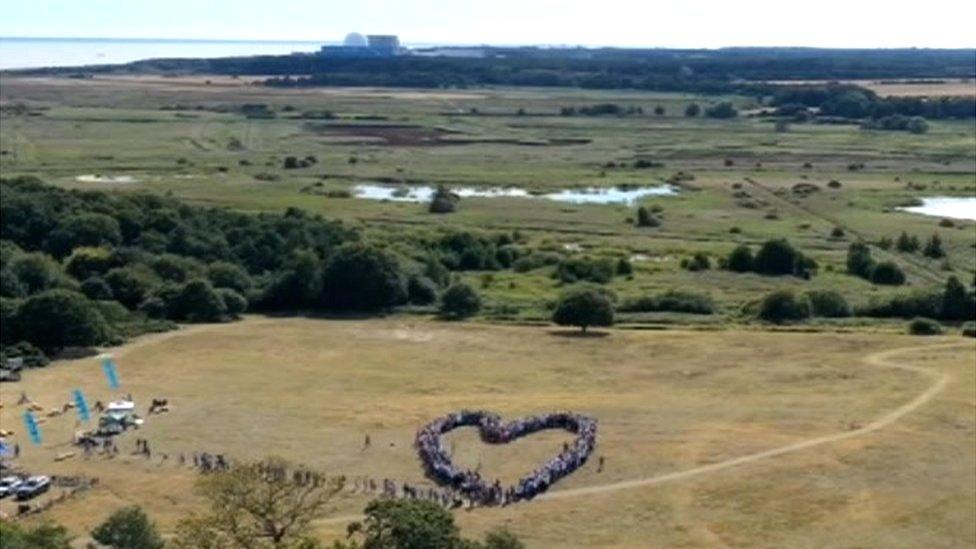Marsh harrier nests discovered on Sizewell C land
- Published
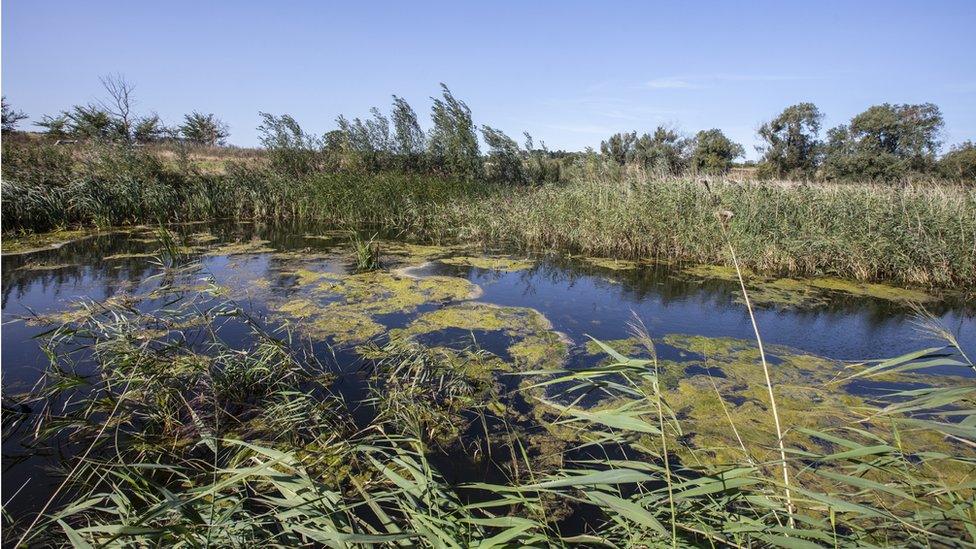
Marsh harrier nests have been found on land where Sizewell C could be built in Suffolk
A protected bird, the marsh harrier, has been found nesting on land where a new nuclear plant could be built.
Ornithologists made the discovery on land belonging to EDF, on the proposed site of Sizewell C in Suffolk, the company behind the plans said.
The Department of Business, Energy and Industrial Strategy (BEIS) and the Planning Inspectorate have been informed, Sizewell C said.
Measures have been put in place to protect them, it added.
It was also liaising with East Suffolk Council and Natural England.
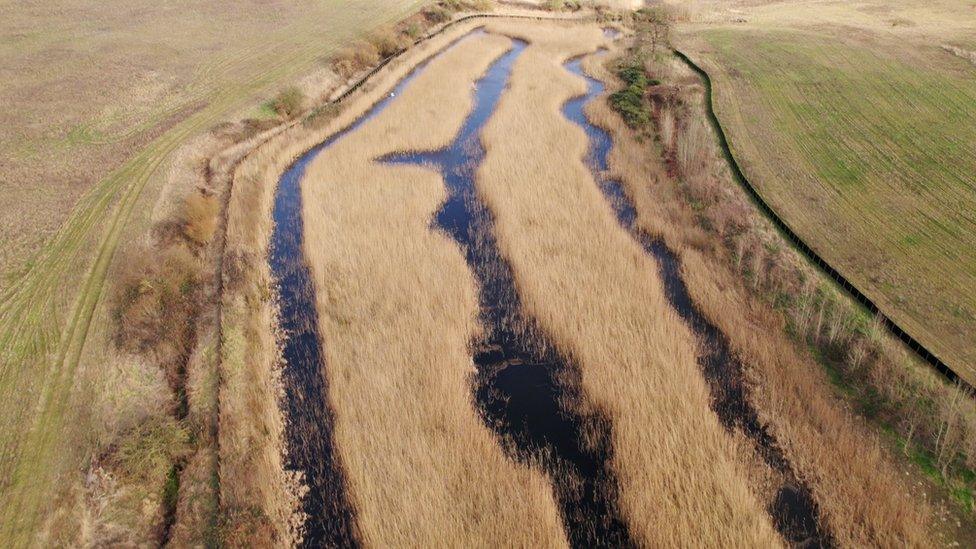
Two marsh harrier nests were found at Aldhurst Farm in Suffolk
The nest was found within the Sizewell Marshes Site of Special Scientific Interest (SSSI) and two further nests at Aldhurst Farm.
Ecological assessments for the planning application for the new power plant had been updated.
Dr Stephen Mannings, consents manager for Sizewell C, said: "We have put in place measures to protect the nests, which will remain in place throughout this year's breeding season."
It was committed to "protecting and promoting local wildlife before, during and after the construction of Sizewell C" and had created 250 acres of new habitats on former arable land within its estate, he added.
Marsh harriers are Protected by The Wildlife and Countryside Act 1981 which means it is an offence to disturb their nests.
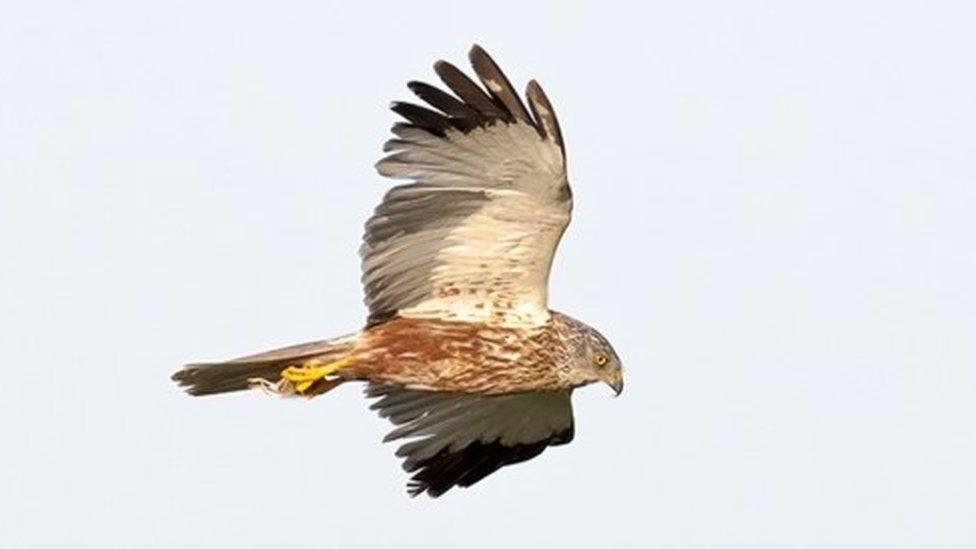
The marsh harrier can be recognised by its long tail and light flight with wings held in a shallow 'V', the RSPB said
The company said it would liaise to see if there were any consequences for its planning application for the proposed geotechnical trials on land north of Sizewell B.
It said it had defined buffer zones around the nests and that "activities and works are being strictly controlled to avoid visual and noise disturbance".
Only work that would not cause disturbance would be permitted.
It will monitor the birds and work will stop if they were being disturbed, it added.
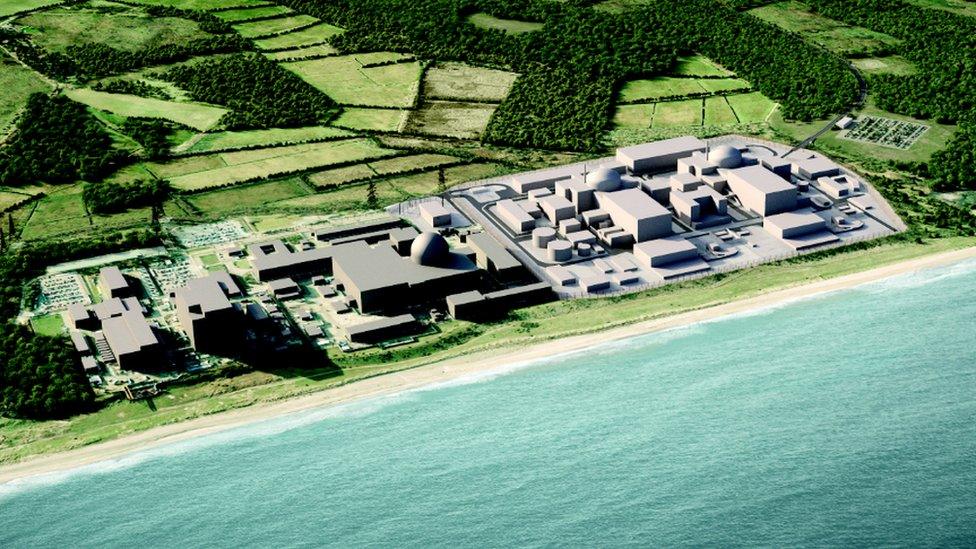
Sizewell C (lighter grey on the right) would be built next to Sizewell B

Find BBC News: East of England on Facebook, external, Instagram, external and Twitter, external. If you have a story suggestion email eastofenglandnews@bbc.co.uk, external
- Published4 May 2022

- Published27 March 2022

- Published29 December 2021

- Published25 September 2021

- Published14 December 2020

- Published15 August 2020
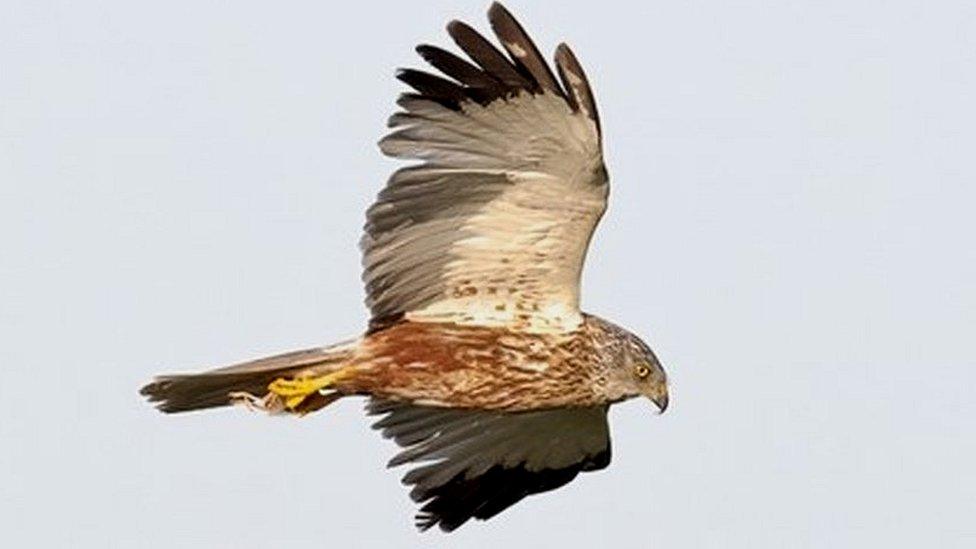
- Published16 September 2019
